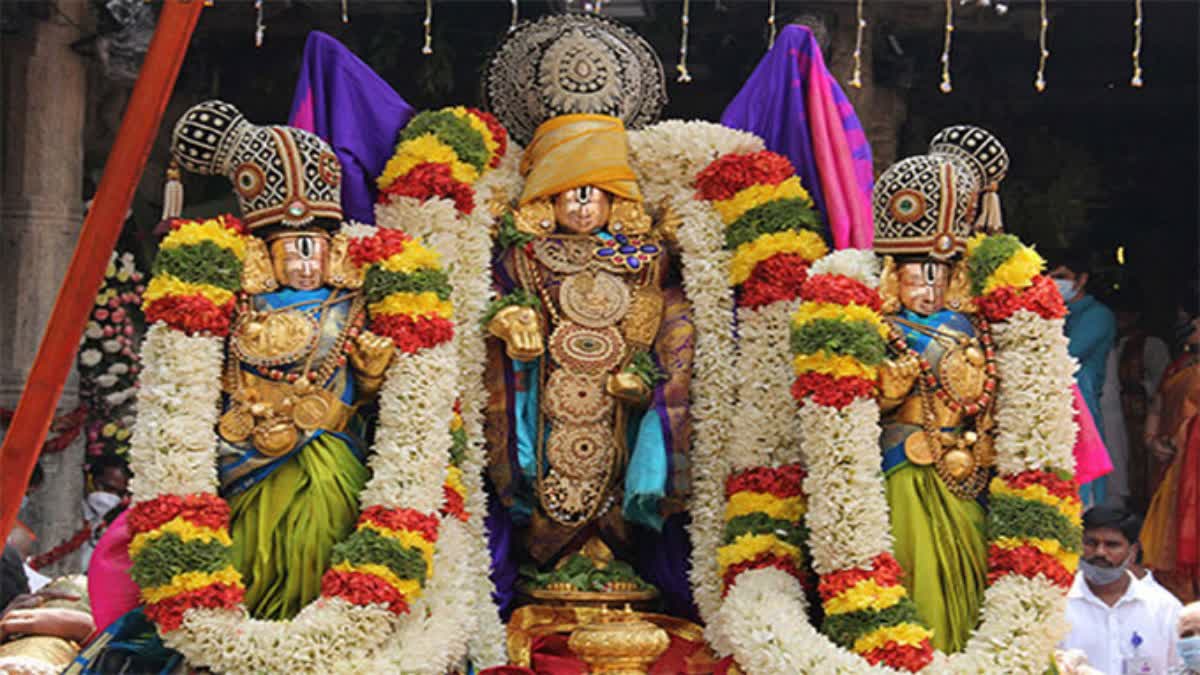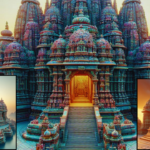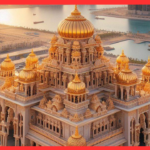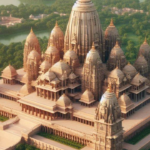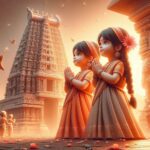Tirumala Brahmotsavams
In connection with the Navaratri Brahmotsavams in Tirumala from October 15-23, TTD has mulled special devotional and spiritual programs along with its SV Recording Project at Nada Neerajanam platform in Tirumala. As a part of it, starting on Sunday, October 15, there will be Veda Parayanam every day between 5 am and 5:45 am followed by discourses on Veda Vignanam by renowned Vedic scholars.
Vedic exponents like Maha Mahopadhyaya Sri Chirravuri Sreerama Sharma, Vedanta Visarada Sri Vempati Kutumba Shastry, Dr. Alladi Mohan, Prof. Chakravarthy Ranganathan, Sri Rani Sadasiva Murty, Sri Devanathan, Sri Krishnamurthy will render discourses on subjects like Panchadasa Samskaras, Rigveda, Vedic Medicine, Kathopanishad, the significance of Vedas in Modern Sciences, etc. on each day.
In the evening, renowned vocalists including Sri Phaninarayana and Nemani Parthasaradi, Dr Mohan Krishna, Smt Srinidhi, Sri Pavankumar Charan, Prof. Saileswari, Smt Rani Srinivasa Sarma, Sri Vasu Rao, Sri Modumudi Sudhakar, Sri Ramachary with their teams will render performances on Nada Neerajanam platform between 4:30 pm and 6 pm on each day during the Navaratri Brahmotsavams.
The Tirumala Navaratri Brahmotsavams, one of the most significant and grand religious festivals in India, is celebrated with great fervor and devotion in the sacred town of Tirumala in the southern state of Andhra Pradesh. This nine-day extravaganza, held annually during the auspicious month of Ashwin, attracts millions of pilgrims and devotees from across the country and around the world. The festival is a grand celebration of Lord Venkateswara, the presiding deity of the Tirumala Temple, and it showcases a beautiful amalgamation of spirituality, tradition, and cultural heritage.
The Significance of Navaratri Brahmotsavams
The Tirumala Navaratri Brahmotsavams hold immense spiritual significance in Hinduism. \”Navaratri\” translates to \”nine nights,\” and it is a time when devotees worship the feminine divine in the form of Goddess Durga. In Tirumala, this festival takes on an added layer of meaning as it is dedicated to Lord Venkateswara, who is considered the preserver of the universe and an incarnation of Lord Vishnu. The festival signifies the victory of good over evil and is a time of prayer, reflection, and renewal of one\’s faith.
The Grandeur of the Celebration
The Navaratri Brahmotsavams is a magnificent spectacle that spans nine days, with each day marked by various rituals, ceremonies, and processions. The festival kicks off with the hoisting of the Garuda flag atop the Dwajasthambham (flag pole) in the temple complex. The first day is known as the \”Ankurarpana\” or \”Dwajarohanam\” and sets the stage for the grand celebrations that follow.
Each day of the festival features a different Vahanam (chariot) procession. The deities are adorned with exquisite jewelry and colorful silk attire. These processions are a sight to behold, and the divine idols are carried through the streets of Tirumala, accompanied by the chanting of hymns and the joyful devotion of the devotees.
The Iconic \”Rathotsavam\”
The \”Rathotsavam\” or chariot procession is the most iconic and eagerly awaited event of the Navaratri Brahmotsavams. On the fifth day, the idols of Lord Venkateswara and His consorts, Sridevi and Bhudevi, are placed on a magnificently decorated chariot. The chariot is drawn by thousands of devotees, and the sight of the Lord\’s idols atop the massive chariot is a deeply moving and spiritually charged experience.
The Devotion of the Pilgrims
The Navaratri Brahmotsavams are attended by countless pilgrims and devotees, many of whom travel great distances to be a part of this divine celebration. Pilgrims, often dressed in traditional attire, come to Tirumala with their families, offering their prayers and participating in the rituals and processions. The atmosphere is charged with devotion, and the collective energy of the worshippers is palpable.
Culmination and Closing
The festival culminates on the ninth day with the \”Chakrasnanam\” ritual, where the idols are bathed with holy waters and purified. This is followed by the \”Dhwajavarohanam,\” where the Garuda flag is ceremoniously lowered, signaling the end of the festival. The deities are then taken back to the temple amid a grand procession, and the entire town reverberates with the chanting of hymns and the ringing of temple bells.
The Tirumala Navaratri Brahmotsavam is a celebration that transcends religious boundaries. It is a testament to the deep faith, devotion, and cultural heritage of the people of India. The festival is not just a religious event but a spiritual journey that allows devotees to connect with the divine profoundly.
As the grand chariots roll through the streets, and the air is filled with the scent of incense and the resonating chants, one cannot help but be moved by the overwhelming sense of devotion and the power of the human spirit. The Tirumala Navaratri Brahmotsavams is a living, breathing testament to the enduring faith and cultural richness of India, a celebration that leaves a lasting imprint on the hearts of all who witness it.
